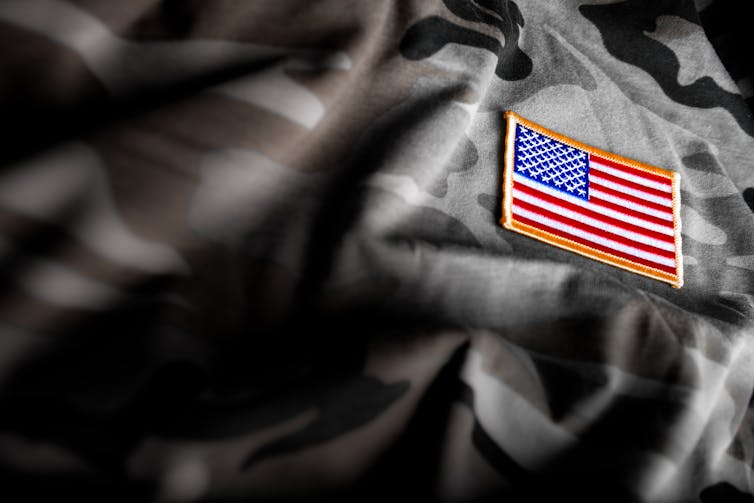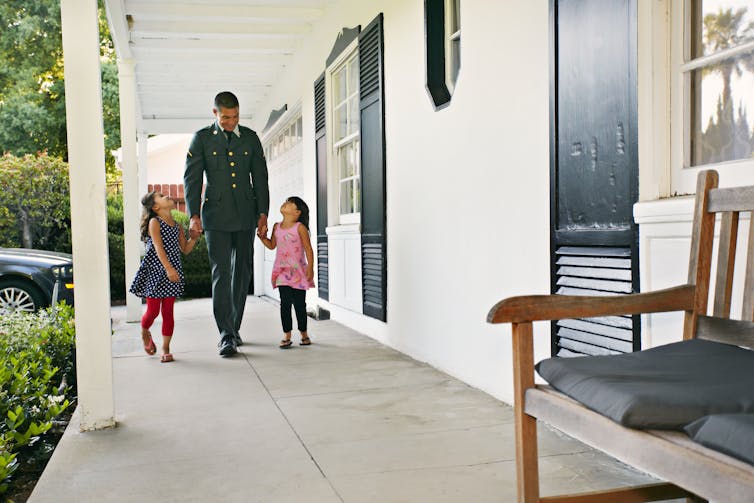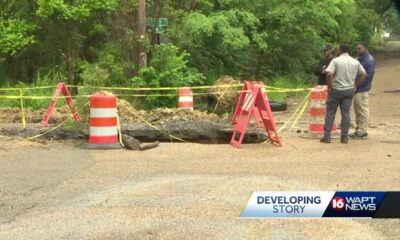Mounting evidence shows that veterans need targeted suicide prevention services.
Jordan Batchelor, Arizona State University; Charles Max Katz, Arizona State University, and Taylor Cox, Arizona State University
America’s military veterans make up about 6% of the adult population but account for about 20% of all suicides. That means that each day, about 18 veterans will die by suicide.
In the U.S., the overall rate of suicide has largely increased since the start of the millennium, but veterans are disproportionately represented among this tragic trend.
Each of these losses affects not only the individual but also their families, friends and co-workers. Thus, working to prevent suicide and its underlying causes is important not only to protect our loved ones but also to foster happier, safer communities.
We are a team of researchers at Arizona State University’s Center for Violence Prevention and Community Safety. We manage the Arizona Violent Death Reporting System, a surveillance system sponsored by the Centers for Disease Control and Prevention and part of the larger national surveillance system that operates in all U.S. states, Puerto Rico and Washington. We gather information on suicides through agreements with the Arizona Department of Health Services, medical examiners and law enforcement.
Individual statistics do not capture the true extent of loss that ripples through a person’s entire family and social network.
Assessing risk amid uncertainty
Military veterans range from 18 years of age to more than 100, include both men and women, and represent diverse races and ethnicities. As of 2018, the largest veteran cohort were those who served during the Vietnam War, followed by those who served during peacetime only, the Gulf War and post-9/11 conflicts.
Identifying the true risk of veteran suicide, especially relative to the general population, is a surprisingly difficult task. In past decades, researchers and stakeholders debated about which figures were most accurate, those showing veterans at increased risk or those showing the opposite. Such debates often stemmed from methodological factors.
However, mounting evidence shows that veterans need targeted suicide prevention services, and our data backs this up. From 2015 to 2022, the age-adjusted suicide rates among male veterans in Arizona outpaced those of nonveterans by a factor of 1.49 to 1.88. Put another way, while veterans in Arizona made up only 8.4% of the population in 2022, they represented 20.3% of the state’s suicides, meaning veterans were 2.5 times more likely to die by suicide.
While these numbers stem from Arizona, they also reflect the national trends showing greater and growing rates of suicide among veterans.
Why are veterans at greater risk?
One reason is that, compared to nonveterans, a greater proportion of veterans are white, male and older – demographic categories with elevated rates of suicide in the general population. For example, in Arizona, about 97% of veteran suicides between 2015 and 2022 were men, compared with 75% in the comparable nonveteran population.
Other explanations relate to veteran-specific factors. Some argue that military training and combat exposure can reduce a person’s fear of pain or death, putting suicidal veterans at greater risk of completing suicide. Military training also familiarizes a person with the use of firearms, a particularly lethal means of suicide. Statistics show that veterans, including female veterans, die by suicide using firearms more so than the general population. This tendency to use firearms as the method of suicide leads to more fatal suicide attempts.
At the Arizona Violent Death Reporting System, we collect data on circumstances that precede and may have contributed to suicide, which can help identify risk factors. While we’ve found that veterans often exhibit fewer such factors overall, certain demographic categories do display risk factors.
For example, a higher proportion of veterans ages 18 to 54 had a diagnosed mental health problem – primarily post-traumatic stress disorder, or PTSD. In addition, more male veterans ages 65 and older had physical health problems that contributed to their suicide compared with similar nonveterans.
This highlights the need to encourage veterans to share their mental or physical health struggles with others, which will prevent veterans from struggling alone. Large-scale initiatives are trying to tackle this issue, but we can also raise awareness and reduce stigma around suicide on a local level.
Shining a light on the problem
In 1999, then-Surgeon General Dr. David Satcher highlighted suicide as a serious public health crisis, paving the way for tackling the monumental issue on a national scale.
Now, 25 years later, the U.S. government continues to emphasize the increasingly dire situation. Most recently, the Biden administration released a 2024 national strategy aimed at establishing strategic directions for improving mental health treatment and reducing suicide.
Historically, health care facilities operated by the Veterans Health Administration have been a central resource for veterans experiencing mental or physical problems. This continues to be true: While the overall population of veterans is decreasing, the number of veterans who seek resources from the organization has increased. Encounters between veterans and the Veterans Health Administration offer opportunities to screen for suicide risk and offer resources for those in need.
Crisis lines are a potentially effective means of prevention. For example, the Veterans Crisis Line has been shown to reduce a caller’s immediate distress and suicidality. Many callers have found the crisis line helpful, with responders providing both effective intervention and compassionate support.
Education and policy provide another means of suicide prevention. As firearms are a particularly lethal means of suicide, a great deal of research funding has gone toward understanding their role in suicide. Studies generally find that reducing access to guns is associated with reduced suicide rates. As a result, both general and veteran-specific suicide prevention efforts highlight the importance of handling guns safely and storing them securely.
If you know a military veteran, keep an eye out for warning signs of mental distress, which may display in a person’s words, feelings or behavior.
For example, they may display intense anxiety, agitation or desperation, or express a sense of hopelessness. Veterans diagnosed with depressive syndrome, PTSD or both may be at greater risk.
For a person who is considering suicide, even the slightest hope can mean the difference between life and death.
If you or someone you know is experiencing signs of crisis, the free and confidential 988 Suicide and Crisis Lifeline is available to call, text or chat.
If you are a veteran and would like to speak with responders trained to understand your unique circumstances, call 988 and then press 1.![]()
Jordan Batchelor, Research Analyst at the Center for Violence Prevention and Community Safety, Arizona State University; Charles Max Katz, Director of the Center for Violence Prevention and Community Safety, Arizona State University, and Taylor Cox, Program Coordinator, School of Criminology & Criminal Justice, Arizona State University
This article is republished from The Conversation under a Creative Commons license. Read the original article.

























































